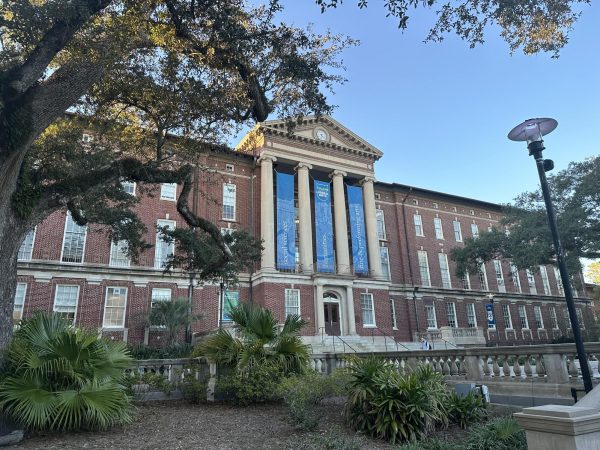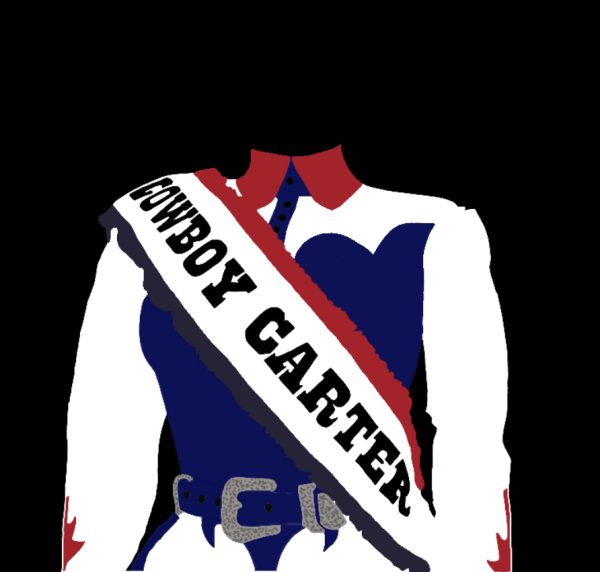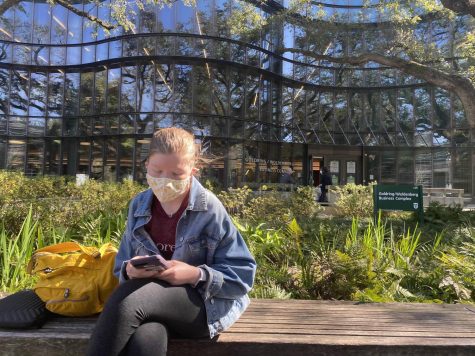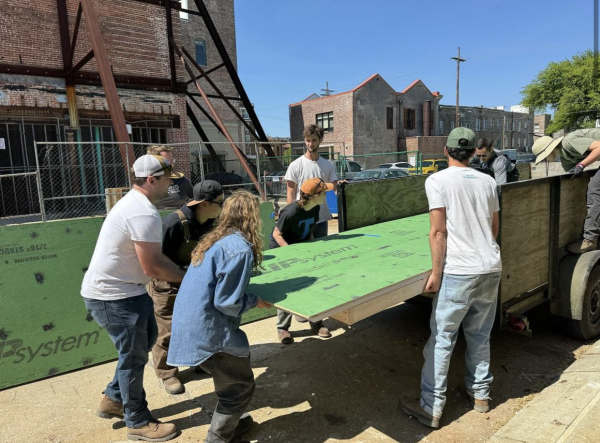Tulane professor adds sound, light to sculpture in ‘Chromatic Surfaces’
September 29, 2016
Over the past few weeks, Tulane art students flooded Instagram with pictures of enormous, swirling sculptures in yellow, orange and purple. These sculptures are part of Richard “Rick” Snow and Jamey Grimes’ exhibit “Chromatic Surfaces,” located in the Carroll Gallery in the Woldenberg Art Center on Tulane’s Uptown campus.
The exhibit combines Grimes’ plastic sculptures and Snow’s lighting and sound design to create an audio-visual experience within the gallery space.
“Chromatic Surfaces,” is not Grimes’ and Snow’s first collaboration. In fact, the artists met while they were in high school. Snow, a Tulane music professor, saw their collaboration as an opportunity to use his skills in projection mapping and digital sound to further shape Grimes’ sculptures.
“I saw his work probably on his website as I was getting reacquainted with some of my high school friends, and I thought to myself, ‘Wow, that is just beautiful sculpture,'” Snow said. “It’s very organic, it’s very immersive, and these are things that I look for in music as well.”
The sculptures on their own are eye-catching, a product of Grimes’ unique artistic approach. Using modular pieces created in his studio, Grimes cuts patterns and burns and melts them into hundreds of fractioned products.
“He shows up at the gallery with a stack of these pieces, then hangs fishing lines all over the gallery and starts hanging the pieces and connecting them with zip ties until he has this remarkable form,” Snow said. “It’s really an improvisation on his part in a lot of senses.”
The ever-shifting lighting in the gallery makes the sculptures seem to glow and pulse with color. This effect is a result of sophisticated projections created specifically to complement the shapes and forms that are present.
“The visuals we make from, initially, [are] a photograph of the sculpture,” Snow said. “Then we manipulate those photographs, create masks from those photographs and alter them using animation software and that kind of thing, so that it seems like the sculpture has an animated skin.”
With the visual attraction of the sculptures, viewers can easily overlook the small, curved pieces of metal hanging from the ceiling in the gallery. These metal parts create the sounds viewers hear and are representative of Snow’s longtime experimentation with audio signals and the resonant frequencies of sheet metal.
“For the last three years or so, I’ve been working with home theater transducers, which are essentially speakers without the box and the cone, so they’re the magnet coil of the speaker,” Snow said. “You can route any kind of audio you want to that little magnet. Then, it has a screw on it, so you can screw it into whatever object you want, and that allows you to send audio signal vibrations into another object.”
Tulane students may recall seeing and hearing Snow’s previous work on the Gibson Quadrangle last year, which featured similar metal sheets, but on a larger scale.
“Chromatic Surfaces” marks Snow refining his process and adapting it to fit the gallery space. As opposed to his past project that used flat sheets, the ones in the gallery are rounded to allow resonant properties to project a more natural pattern.
Snow claims that the installation has evoked a wide range of reactions in its viewers.
“I think the piece itself is abstract but suggestive of natural forms, so people will say things like, ‘Oh, I feel like I’m under the sea,’ or, ‘I’m in a coral reef,'” Snow said. “Someone wrote something about it feeling like a detox, some kind of meditative detox.”
“Chromatic Surfaces” will remain in the Carroll Gallery until Sept. 30, meaning there are just a couple of days left for those who wish to immerse themselves in the space Snow and Grimes have created.






















Leave a Comment